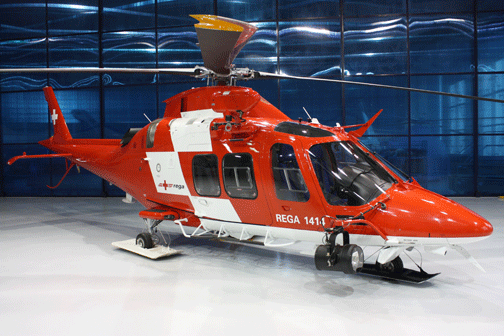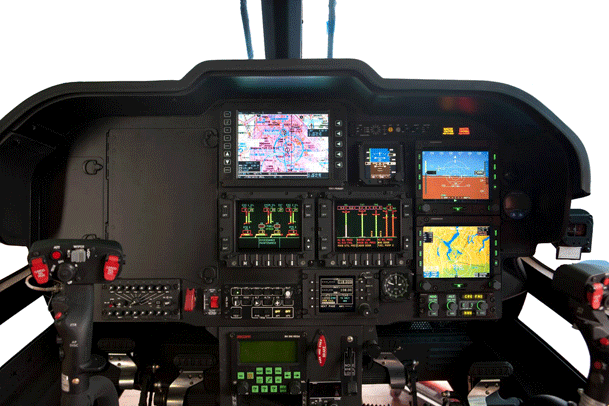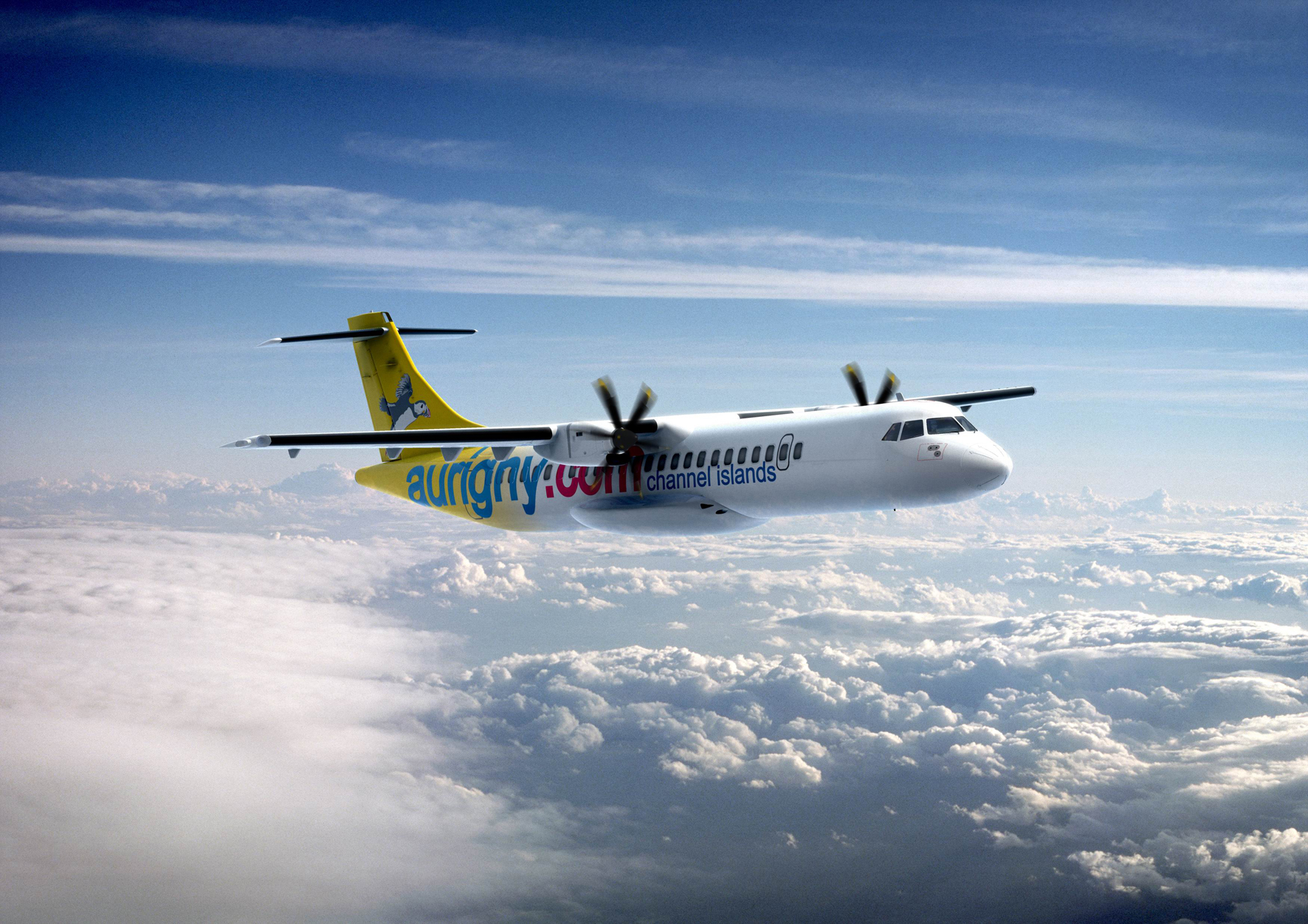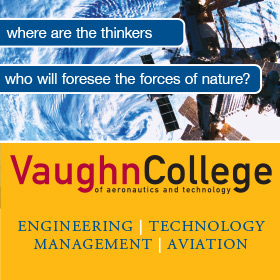AgustaWestland Unveils the DA VINCI Project Helicopter
March 6, 2009

AgustaWestland, a Finmeccanica company, has unveiled the DA VINCI helicopter to Swiss air-rescue operator REGA during an official ceremony held at AgustaWestland’s Vergiate plant on March 4th. The DA VINCI is a modern top-of-the-range light twin specifically developed from the highly successful AgustaWestland Grand to meet REGA’s DA VINCI project requirements for a mountain rescue and air-ambulance helicopter.
The DA VINCI project was aimed at selecting a light twin aircraft capable to perform high altitude rescue missions as well as the rapid hospital-to-hospital transfer of severely injured patients and providing them with specialised medical treatment in flight. The customer selected the specifically developed DA VINCI project helicopter in late 2006 following an extensive evaluation process and subsequently placed an order for eleven aircraft plus four options.
Renzo Lunardi, Senior Vice President Commercial Business Unit, AgustaWestland said “We are proud to have presented this brand new variant to our customer. The development of the DA VINCI is an example of AgustaWestland developing an advanced tailored solution to meet a customer’s demanding requirements. We are delighted to continue our long relationship with REGA, one of the world’s premier rescue organisations, knowing that the DA VINCI will allow it to perform its mission successfully.”
The high performance DA VINCI features a large cabin providing the space only found in larger and more expensive helicopters. The DA VINCI can get to the casualty quicker than competing helicopters saving vital minutes on the time it takes to get the casualty to hospital and the aircraft is provided with a special Emergency Medical Service (EMS) interior developed by REGA and Aerolite.

The DA VINCI helicopter’s state-of-the-art avionics, totally developed by AgustaWestland, includes a dual duplex four axis digital Automatic Flight Control System (AFCS), Electronic Flight Instrument System (EFIS) with an embedded Flight Management System, 3D Synthetic Vision & Terrain Awareness Warning System (TAWS) embedded into the EFIS, a Radio Management System (RMS) with radio tuning unit for communication and navigation, an Euronav V digital map and an Enhanced Vision System (EVS). The helicopter is also equipped for single pilot VFR operations and a Night Vision Goggle (NVG) compatible cockpit.
REGA is acknowledge as one of the most experienced air-rescue organisation worldwide and its choice provides further testimony of the AgustaWestland’s capability to satisfy the most challenging customer needs. The DA VINCI project helicopter is an ideal successor to the A109K2 selected by REGA in 1989 and it will ensure a quantum leap forward in mission effectiveness and responsiveness to meet 21st century mountain rescue requirements.
Aurigny Air Services Takes Delivery of its First ATR 72-500
March 5, 2009

Guernsey-based carrier Aurigny Air Services today took delivery of its first new ATR 72-500, in accordance with a deal for two ATR 72-500s inked in summer 2007 and valued at some US $ 37 million. With its new ATR 72-500s, configured with 72-seats and equipped with the “Elegance Cabin”, Aurigny Air Services will replace two out of its current three ATR 72-200s.
Commenting on this first ATR 72-500, Malcolm Hart, Managing Director of Aurigny Air Services, quoted: “We are pleased to take delivery of our first ATR 72-500, and launch the modernization of our turboprop fleet with aircraft featuring the lowest operating costs and the most reduced environmental footprint of the regional aviation. With its very low CO2 and noise emissions, the ATRs have proven themselves as a very ‘good neighbour’. We are really satisfied with the high degree of performance of our ATR aircraft since we started operating them in 2003. Now it is time to go one step forward, providing to our passengers new aircraft which have the highest standards of comfort available today.”
Stéphane Mayer, ATR CEO, underlined “that ATR is honored by the confidence that Aurigny Air Services has shown in the ATR family of aircraft for the development of their network from and to the Channel Islands. The ATR aircraft are optimally adapted to the type of routes operated by Aurigny Air Services. Now, the airline will introduce into its fleet the many advantages of the ‘-500 series’, mainly in terms of higher performance, better comfort and lower operating costs.” He added: “We are also delighted to contribute to the preservation of the environment of the Channel Islands with aircraft that feature the lowest fuel burn of the regional aviation market”.
Since the beginning of the programme, ATR has sold 979 aircraft (420 ATR 42s and 559 ATR 72s).
The ATR –500 series:
With its ATR 42-500 and ATR 72-500, ATR supplies state-of-the-art aircraft with the highest standards of comfort. The advanced six-blade propeller provides remarkably low noise levels. All ATR models are compliant with noise regulations and have a large margin with regard to Chapter IV (ICAO) regulations. The ‘-500 series’ feature the lowest fuel consumption per passenger and CO2 emissions of the regional aviation, thus contributing to make ATR the “Green Player” of the regional aviation.
About Aurigny Air Services
Aurigny is based in Guernsey, the second largest of the Channel Islands. It operates daily flights to London Gatwick, London Stansted, Manchester, Bristol, Southampton, Alderney, Jersey and Dinard. On the 1st of May 2009 Aurigny will introduce new daily services between Guernsey and East Midlands, and between Jersey and London Stansted, as well as a fifth daily service between Guernsey and London Gatwick. The word ‘Aurigny’ comes from the Norman-French name for the island of Alderney where the airline started operations in 1968. Aurigny flew 45,000 passengers in its first year and has flown nearly 10 million passengers since. The airline celebrated its 40th birthday in 2008, becoming one of longest-running regional operators in the world.
About ATR
Toulouse, Southern France-based regional aircraft manufacturer ATR is the world leader in the 50 to 74-seat turboprop market. ATR is an equal partnership between Alenia Aeronautica (a Finmeccanica company) and EADS. In 2008, ATR posted an annual turnover record, with US $ 1.3 billion.
NASA’s Kepler Mission Set for Launch
March 5, 2009
WASHINGTON, DC UNITED STATES
CAPE CANAVERAL, Fla., March 5 /PRNewswire-USNewswire/ — NASA’s Kepler mission to seek other Earth-like planets is undergoing final preparations for liftoff Friday, March 6, from Pad 17-B at Cape Canaveral Air Force Station in Florida. The spacecraft launch aboard a Delta II rocket has two windows of opportunity Friday, from 10:49 to 10:52 p.m. and 11:13 to 11:16 p.m. EST.
Kepler is designed to find the first Earth-size planets orbiting stars in habitable zones — regions where water could pool on the surface of the planets. Liquid water is believed to be essential for the formation of life.
“This mission attempts to answer a question that is as old as time itself — are other planets like ours out there?” said Ed Weiler, associate administrator for NASA’s Science Mission Directorate at NASA Headquarters in Washington. “It’s not just a science question — it’s a basic human question.”
After the clock ticks down to liftoff, the Delta II’s first-stage main engine and six strap-on solid rocket boosters will ignite. Three remaining boosters will ignite 65.5 seconds later, and the first-stage main engine will continue to burn for 4.5 minutes. The second stage will then ignite, carrying Kepler into a circular orbit 115 miles above Earth less than 10 minutes after launch. After coasting for 43 minutes, the second-stage engine will fire again, followed by second-stage shutdown and separation. The third stage will then burn for five minutes.
Sixty-two minutes after launch, Kepler will have separated entirely from its rocket and will be in its final Earth-trailing orbit around the sun, an orbit similar to that of NASA’s Spitzer Space Telescope. “We are very excited to see this magnificent spacecraft come to life when it reaches space,” said James Fanson, Kepler project manager at NASA’s Jet Propulsion Laboratory, Pasadena, Calif.
After a commissioning period lasting about two months, Kepler will begin its job of staring at more than 100,000 stars for three-and-one-half years, looking for planets. Its isolated perch behind Earth will give the telescope an unobstructed view of a single, very large patch of sky near the Cygnus and Lyra constellations.
“We will monitor a wide range of stars: from small cool ones, where planets must circle closely to stay warm, to stars bigger and hotter than the sun, where planets must stay well clear to avoid being roasted,” said William Borucki, science principal investigator for the mission at NASA’s Ames Research Center at Moffett Field, Calif. Borucki has been working on the mission for 17 years. “Everything about the mission is optimized to find Earth-size planets with the potential for life, to help us answer the question — are Earths bountiful or is our planet unique?”
Kepler will find planets by looking for periodic dips in starlight. Planets that happen to pass directly in front of their stars from Earth’s point of view cause the stars to dim by almost imperceptible amounts. Kepler’s powerful camera, the largest ever flown in space, can see the faintest of these “winks.”
“Trying to detect Jupiter-size planets crossing in front of their stars is like trying to measure the effect of a mosquito flying by a car’s headlight,” said Fanson. “Finding Earth-sized planets is like trying to detect a very tiny flea in that same headlight.”
If the mission does find Earth-sized planets in the habitable zones of stars, it should find them first around stars that are smaller than our sun. This is because the habitable zone is closer for small stars; planets circling in this region would take less time to complete one lap and, theoretically, less time for Kepler to find them and for other ground-telescopes to confirm their existence. Any Earth-size planets orbiting in the habitable zones of stars like our sun — the true Earth analogs — would take at least three years to be confirmed.
Kepler is a NASA Discovery mission. Ames is the home organization of the science principal investigator and is responsible for the ground system development, mission operations and science data analysis. NASA’s Jet Propulsion Laboratory in Pasadena, Calif., manages the Kepler mission development. Ball Aerospace & Technologies Corp. of Boulder, Colo., is responsible for developing the Kepler flight system and supporting mission operations. NASA’s Launch Services Program at NASA’s Kennedy Space Center, Fla., manages the launch service including payload integration and certifying the Delta II launch vehicle for NASA’s use.
Asia Pacific Aerospace & Defense Players Take Center Stage at the 2009 Frost & Sullivan Asia Pacific Aerospace & Defense Awards
March 5, 2009
Frost and Sullivan. (PRNewsFoto/Frost and Sullivan)
SAN ANTONIO, TX UNITED STATES
~ Eleven Singapore companies feature in the A-list of Award recipients ~
SINGAPORE, March 5 /PRNewswire/ — Frost & Sullivan today hosted the prestigious 2009 Frost & Sullivan Asia Pacific Aerospace and Defense awards that showcased the region’s best players. In its second consecutive year, the Aerospace & Defense Awards honored 27 companies across nine award categories. The banquet saw about 180 senior industry-members, C-suite executives and government officials at a glamorous evening gala.
(Logo: http://www.newscom.com/cgi-bin/prnh/20081117/FSLOGO)
Of those in attendance to receive their coveted titles were the who’s who of the industry like Groeger Sebastian, Senior Vice President & Head of ASEAN of Jet Aviation; Lim Swee Nian, Deputy Executive Director, Industry Development Science and Engineering Research Council, A*STAR; T. C. Chan, Vice President & Managing Director Asia Pacific, Rockwell Collins; Gary Nutter, Chief Executive Officer, Singapore Aero Engine Services and Yeo Kia Thye, Director – Airport Operations, Singapore Changi Airport; amongst several others.
The Awards seek to showcase best practices in the industry segments which are synonymous with Frost & Sullivan’s in-depth analysis and coverage of these industries. In keeping with our time-honored commitment in pursuit of excellence and innovation, the awards offered are carefully reviewed and evaluated to reflect the current market landscape and include new emerging sectors.
The awards are based on extensive market engineering tools evolved by Frost & Sullivan. Industry analysts compare market participants and measure performance through in-depth interviews, analysis, and extensive secondary research in order to identify best practices in the industry.
“Running into its second year, once again we are hosting this momentous congregation in Singapore. The 2009 Frost & Sullivan Asia Pacific Aerospace & Defense Awards has acted as a platform to recognize the best practices within the aviation industry, defense and homeland security segments,” says Mr. Subhranshu Sekhar Das, Director of Asia Pacific Aerospace & Defense practice at Frost & Sullivan.
He further added that, “In 2009 we will not only recognize the industry stalwarts as the tradition goes, but also many pioneers from within the industry. The practice of continuously identifying and honoring innovations and best practices is a key ingredient to make improvements in technology, marketing, operations and production. This promotes better practices and the higher levels of doing business and will pave the way through difficult times. The industry looks forward to work more closely than ever before in 2009 and expects to learn and share a lot along the way.
Although the Aerospace & Defense industry has grown to a very mature one over the last hundred years, it has never stopped fascinating the industry with its innovative best practices. The last twelve months of high fuel prices, increasing costs of factors of production and consolidations have made the fraternity pass through a litmus test, which have not only left the industry more mature than ever before, but also equipped it with a basket of best practices.
The companies commended as award recipients are those that have displayed exemplary achievements in areas such as market leadership, marketing strategy, business development strategy, market penetration, customer service, growth strategy and product line strategy, amongst others. Also, qualities such as diligence, perseverance, innovation and dedication required to develop a successful business plan and excel in the increasingly competitive global marketplace are pre-requisites of the illustrious award recipient.
Frost & Sullivan congratulates all the outstanding recipients of the 2009 Frost & Sullivan Asia Pacific Aerospace & Defense Awards
Awards Titles Award Recipients
General Aviation Category
Aerospace Logistics Company of the year DB Schenker
Aircraft Lessor of the year AWAS
Fixed based Operator of the year Jet Aviation
Aviation Training Category
Aerospace R&D Organization of the year A*Star
Aerospace Technical Training Institution Air Transport Training
of the year College
Aerospace Academic Institution of the year Nanyang Technological
University
Defense Category
Strategic Military Communication
Provider of the year Rockwell Collins
Tactical Military Communications
Provider of the year Codan
Homeland Security Category
Inspection and Screening
Provider of the year Rapiscan Systems
Critical Infrastructure Protection
Provider of the year Certis CISCO
Homeland Security Agency of the year Malaysian Maritime
Enforcement Agency
MRO Category
Aero Engine MRO Center of the year Singapore Aero
Engine Services
Airframes MRO Center of the year Malaysian Airlines
Engineering &
Maintenance
Aero Components MRO Center of the year International Engine
Component Overhaul
Aerospace MRO Support Service Provider
of the year Eltra Aeronautics
Aerospace Manufacturing Category
PMA Market Penetration Leadership of the year HEICO Corporation
Aero Engines OEM of the year Rolls-Royce
Aero Components OEM of the year Hamilton Sunstrand
Pacific Aerospace
Airframes OEM of the year ATR
Aerospace Manufacturing Support Services
Provider of the year A & One Precision
Engineering
Airports Category
Airport of the Year (Below 15 Million
Passengers Annually) Penang International
Airport
Airport of the Year (Above 15 Million
Passengers Annually) Incheon International
Airport
Airport Support Service Provider of the year SITA
Airlines Category
Air Cargo Carrier of the year Singapore Airlines
Cargo
Voice of Customer Category
Voice of Customer Airport Experience of the year Singapore Changi
Airport
Voice of Customer Airline Onboard Experience
of the year Japan Airlines
Voice of Customer Airline of the year Singapore Airlines
The AAIS is the supporting organisation for the awards banquet along with IE Singapore, Singapore Exhibition and Convention Bureau and Uniquely Singapore. Aerospace Singapore, Asian Airlines & Airports, Asian Defense & Diplomacy and Asian Military Review were the supporting media partners while PR Newswire was the official wire for the awards.
Frost & Sullivan, the Growth Partnership Company, enables clients to accelerate growth and achieve best in class positions in growth, innovation and leadership. The company’s Growth Partnership Service provides the CEO and the CEO’s Growth Team with disciplined research and best practice models to drive the generation, evaluation and implementation of powerful growth strategies. Frost & Sullivan leverages over 45 years of experience in partnering with Global 1000 companies, emerging businesses and the investment community from 31 offices on six continents.
Boeing Expands Electronic Flight Bag Offerings
March 5, 2009
Hardware provides customers the flexibility they want in an EFB solution
SEATTLE, March 5 /PRNewswire-FirstCall/ — Today Boeing (NYSE: BA) announced an agreement with Esterline CMC Electronics to provide Class 2 Electronic Flight Bag (EFB) hardware on selected airplane models for production and retrofit, starting with the Next-Generation 737. A second provider will be announced later.
“Boeing is providing the very important elements of end-to-end integration as well as commonality across EFB classes. Many Class 2 providers offer no integration, leaving it to be done by the airline. This can add unanticipated cost and increase technical and schedule risk,” said Robert Manelski, director of Crew Information Services, Commercial Aviation Services, Boeing Commercial Airplanes. “Our EFB solution is fully integrated, allowing customers the flexibility they want, with Boeing support throughout the life cycle of the product.”
Boeing is developing a common application suite and ground infrastructure for use across Class 1, 2, and 3 EFBs to maximize the value of the EFB infrastructure by including Boeing and Jeppesen applications and data.
“This selection of our PilotView(R) EFB makes the most of our strengths in Class 2 hardware delivery and combines it with Boeing’s strengths in data delivery and integration,” said Jean-Pierre Morteux, CMC Electronics president and chief executive officer. “We believe this combination will offer the flexibility that customers are seeking.”
The EFB contains all documentation and forms that pilots carry — aeronautical maps and charts, manuals, minimum equipment lists and logbooks — in digital format and puts them at the crew’s fingertips. The Boeing system provides an integrated solution from the airplane to the airline’s back office and offers value through improved operational efficiencies.
In October 2003, Boeing became the first to have a Class 3 EFB certified and integrated on the 777 fleet . Since then, Boeing has certified the Boeing Class 3 EFB for the Next-Generation 737, 757, 767 and 747-400 models and has made it standard on the 787 Dreamliner and Boeing Business Jets. Boeing currently has more than 1,000 Class 3 EFBs on order.
American Airlines Announces Renovation Plans for Admirals Club Lounge at Logan International Airport
March 5, 2009
FORT WORTH, Texas, March 5 /PRNewswire-FirstCall/ — American Airlines has begun extensive renovations to its Admirals Club at Logan International Airport in Boston. The project, slated for completion in early 2010, will feature a reconfigured floor plan to create a more open, spacious feel.
“We are excited to offer Admirals Club members and day pass visitors additional space and an updated facility in Boston,” said Nancy Knipp, President – Admirals Club for American Airlines. “The refurbishments to our Admirals Club will further our efforts to better serve our members and guests.”
The remodeled lounge will offer seating for 214 and include the addition of a cyber cafe, children’s room with age-appropriate TV programming and computer games, five new flat panel-televisions and TV lounge and cafe seating where customers can enjoy complimentary light snacks, juice, tea, coffee and soft drinks or purchase delicious fare from the lounge’s food and beverage program, Amora(TM).
Other highly valued amenities include an updated multi-functional business center outfitted with telephones, a global print solution powered by PrinterOn, copier and fax service. American’s professional Premium Services representatives can also assist guests with boarding passes, reservations, seat selection and upgrades.
Located in Terminal B near Gate 36, the Admirals Club is currently open Sunday – Friday from 4:45 a.m. – 8:00 p.m. and; Saturday from 4:45 a.m. – 7:30 p.m. Beginning May 1, the club will be open daily from 4:45 a.m. – 9:30 p.m. The renovation project will be divided into three phases allowing the club to remain open throughout its duration.
American, a founding member of the oneworld(R) Alliance, operates 44 Admirals Club locations in airports throughout the world. In an effort to enhance the travel experience for its customers, American continues to reinvest in its Admirals Club and Flagship Lounge facilities. In addition to the Boston Admirals Club refurbishment project, American recently opened two new Admirals Club lounges – one at Raleigh/Durham in October 2008 and one at Washington Dulles in February 2009 – plus one new Flagship Lounge in Miami in December 2008.
One-year Admirals Club memberships for new members range from just $350 to $500. AAdvantage miles may also be used to purchase Admirals Club memberships. One-day passes are available for $50, and can be purchased online, at self-service check-in machines, or at any Admirals Club location.
Gulfstream Reduces Aircraft-Production Rates to Balance Deliveries for 2009 and 2010
March 5, 2009
FALLS CHURCH, Va., March 5 /PRNewswire-FirstCall/ — General Dynamics (NYSE: GD) announced today that, as a result of deterioration in the backlog, particularly during the month of February, and continued weak demand, Gulfstream Aerospace has found it necessary to cut large-cabin aircraft production and green-aircraft deliveries from a projected rate of 94 to 73 in 2009. Gulfstream also will reduce production of its mid-size aircraft from a projected rate of 30 to 24 aircraft this year.
Gulfstream is taking these measures in an effort to both stabilize its backlog of aircraft orders and level-load production over 2009 and 2010. This action will result in a reduction-in-force of 1,200 workers, including approximately 550 contractor personnel.
“Despite the current challenges, we continue to believe that Gulfstream’s backlog provides a solid foundation for the business in this tough market environment,” said Nicholas D. Chabraja, chairman and chief executive officer of General Dynamics. “We regret the impact of these actions on our employees and their families, and are doing our best to minimize the number of workers effected.
“As a direct result of the action we have taken at Gulfstream, General Dynamics is updating its guidance with respect to earnings for 2009. We are lowering that guidance from the previously stated range of $6.70-$6.75 to a range of $6.00-$6.10,” Chabraja said.
Gulfstream Aerospace Corp. is a wholly owned subsidiary of General Dynamics. General Dynamics, headquartered in Falls Church, Va., employs approximately 92,300 people worldwide. The company is a market leader in business aviation; land and expeditionary combat systems, armaments and munitions; shipbuilding and marine systems; and information systems and technologies.
Delta AirElite Continues Charter Fleet Expansion, Adding a Citation X Aircraft
March 5, 2009
CINCINNATI, March 5 /PRNewswire/ — Delta AirElite Business Jets today announced the addition of a Citation X, further expanding its charter fleet. The aircraft is the world’s fastest business jet, cruising at speeds up to 600 mph and offering a range of 3,300 miles.
“Delta AirElite offers a broad range of charter aircraft options to serve our customers varying needs and requests,” said Curtis Kruger, Delta AirElite’s Chief Operating Officer. “The addition of a Citation X to our fleet further demonstrates our commitment to provide our customers with access to the most popular and technologically advanced charter aircraft available.”
The Citation X seats eight passengers and offers a spacious stand-up cabin with a full complement of amenities designed to provide passengers with a comfortable and productive travel experience.
Based at the DuPage County Airport (DPA) outside of Chicago, the Citation X joins the Delta AirElite fleet through an aircraft management agreement. Delta AirElite continues to expand its fleet through aircraft management agreements which provide high-quality and well-maintained jets for its broad base of customers. Aircraft management agreements are an attractive option for corporations and aircraft owners who want to lower aircraft ownership costs, generate revenue and enjoy unique benefits available only through Delta AirElite.
Delta AirElite was the first charter operator to add the luxurious Falcon 7X, the newest member of the Falcon Jet family, to its fleet. In addition, Delta AirElite is also one of the first charter operators to certify the ultra long-range Gulfstream G550 and the super mid-size Bombardier Challenger 300 for commercial charter service.
Delta AirElite Business Jets is a wholly owned subsidiary of Delta Air Lines, providing aircraft charter, aircraft management and its innovative Fleet Membership program. Delta AirElite combines 25 years of experience serving business aviation travelers with the resources of the world’s largest airline to provide a truly exceptional travel solution. The Company operates a diverse fleet of Bombardier, Cessna, Dassault, Gulfstream, and Hawker Beechcraft jets. Delta AirElite consistently receives awards for outstanding customer service and has continuously held the coveted ARG/US Platinum safety rating longer than any other operator in the world.
InterSense and BVR Systems Team to Develop GPS-Independent First Responder Locator System
March 5, 2009
Funding From the BIRD Foundation Will Support Development of Robust, Simple-to-Operate System to Enhance Emergency Responder Safety by Accurately Tracking Their Location in GPS-Occluded Areas
ROSH HA’AYIN, Israel, March 5 /PRNewswire-FirstCall/ — BVR Systems (1998) Ltd. (OTC: BVRSF) a leading developer of large scale, networked systems for simulation and command and control, and InterSense Inc., a market leader in precision motion technology, today announced they have executed a Partnership Agreement to develop the First Responders Independent Navigation Device (FIND). The Agreement will enable the two firms to bring together and further develop key intellectual property and technology into one solution that meets a growing need within the first responder community.
The FIND system will enhance incident safety for firefighters and other emergency responders. It is designed to provide precise locating, tracking and monitoring of each team member’s position within an emergency area without relying upon GPS coverage.
Under the Partnership, InterSense will lead the development of the core sensing component based on the company’s NavShoe(TM) technology, a boot-mounted inertial sensor that provides highly accurate position data. NavShoe incorporates advanced filter algorithms that continually correct for “drift,” which is commonly experienced when tracking a responder’s progress with inertial sensors. This enhancement enables accurate tracking of the individual’s position over extended periods of time and distance. BVR will lead the overall system design, develop the command and control network to enable easy use of the system by field commanders and perform final system integration.
Supplemental financial support for the development and eventual deployment of the system will be provided by the Binational Industrial Research and Development (BIRD) Foundation. This organization supports technology development in key commercial areas between Israeli and US organizations.
“There are two critical elements in developing the FIND solution,” stated Ilan Gillies, CEO, BVR Systems Ltd. “First, the system must precisely track and monitor first responders’ locations. It must then collect that data via robust wireless links and synchronize such information in the command and control system. Together, InterSense and BVR will provide a superior solution for these important tasks at an affordable price.”
“First responders put their lives on the line to protect others, so when they are faced with an emergency, they need to get assistance fast,” added T.C. Browne, CEO, InterSense Inc. “In the event someone becomes trapped, for example, every second counts and the commander must have a clear picture of each team member’s precise location in order to launch effective search and rescue operations. We are proud to have the technology needed to develop a system that can monitor the location of first responders under such conditions, even in the absence of GPS. We are very pleased the BIRD Foundation has recognized the tremendous potential of a joint InterSense/BVR system and are excited to leverage the technology of these two well-positioned companies in order to save lives.”
About InterSense
Founded in 1996, InterSense Inc. is a precision motion technology company delivering real time positioning, tracking and alignment capabilities, which bring higher speed and quality to visual simulation, enhanced vision and navigation applications. InterSense’s patented motion tracking products enable realistic interaction with computer graphics for demanding applications such as simulation and training; cockpit and vehicle guidance; oil and gas exploration; manufacturing; virtual prototyping and design; medical imaging; entertainment; and video/film production. Privately-held InterSense is headquartered in Bedford, Massachusetts.
About BVR Systems
Founded in 1998, BVR Systems Ltd. is a world leader in advanced defense training and simulation systems. The Company offers highly efficient, cost-effective solutions to the simulation, training and debriefing needs of modern air, sea and ground forces.
Northrop Grumman Takes Delivery of First F-35 Parts From Key Turkish Supplier
March 5, 2009
Composite parts from Turkish Aerospace Industries will be used on first production jets.
EL SEGUNDO, Calif., March 5 /PRNewswire-FirstCall/ — Turkish Aerospace Industries, Inc. (TAI), a major supplier to Northrop Grumman Corporation (NYSE: NOC) on the F-35 Lightning II aircraft program, has produced and delivered its first composite parts for the jet.
The new parts – structural composite panels used to form the outer surface of the new international, multi-role fighter – represent a critical first step in TAI’s plans to eventually produce 400 center fuselages for the program. Northrop Grumman will integrate the parts into the center fuselages of the first two production F-35s.
“This delivery represents two significant milestones for the program,” said Mark Tucker, vice president of tactical systems and F-35 program manager for Northrop Grumman’s Aerospace Systems sector. “It demonstrates that TAI can build composite parts to the precision level needed for a high volume, international aircraft program. And it gives Northrop Grumman a very positive progress report on its commitment to grow and nurture international industrial participation in the program.”
According to Tucker, the composite panels also represent the first F-35 parts produced in a new composites manufacturing facility opened by TAI last November in Ankara, Turkey. To date, Northrop Grumman has trained nearly two dozen TAI employees in the high precision fabrication techniques being used in that facility.
TAI’s recent shipment included six composite panels – three for each of the two jets being produced under the first phase of low rate initial production. As part of its F-35 work share, the company will produce similar composite panels for every jet made during the production phase of the program.
Northrop Grumman is a principal and founding member of the Lockheed Martin-led F-35 Lightning II team. The company is responsible for the design and production of center fuselages for all three variants of F-35 aircraft: conventional take-off and landing; short take-off, vertical landing; and carrier-compatible. The F-35 Lightning II program expects to build more than 3,100 aircraft.
Under a Letter of Intent signed with Northrop Grumman in Feb. 2007, TAI serves as a second source supplier of F-35 center fuselages to the company. Deliveries of complete TAI-produced center fuselages are scheduled to begin during the low rate initial production (LRIP) phases of the program.
As a member of the F-35 global industry team, Northrop Grumman is central to the development, production and support of the F-35 Lightning II. The company designed and produces the aircraft’s center fuselage, radar and other key avionics including electro-optical and communications subsystems; develops mission systems and mission-planning software; leads the team’s development of pilot and maintenance training system courseware; and manages the team’s use, support and maintenance of low-observable technologies.
Northrop Grumman Corporation is a leading global security company whose 120,000 employees provide innovative systems, products, and solutions in aerospace, electronics, information systems, shipbuilding and technical services to government and commercial customers worldwide.
<






